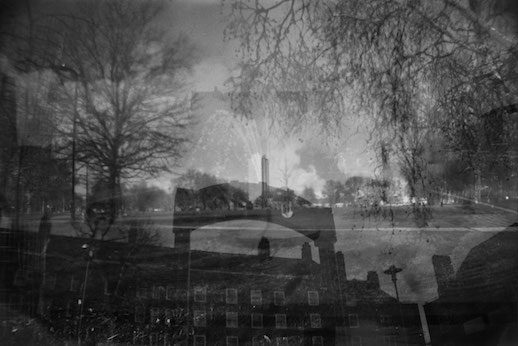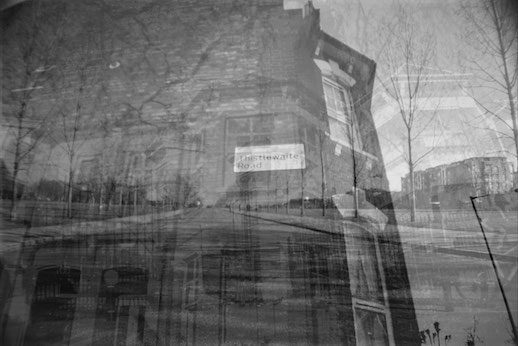Adam Scovell muses on Harold Pinter, the inspiration behind his new East London-centric film
A Walk By Waiting – A film by Adam Scovell
I’d like to walk with you
From Clapton Pond to Stamford Hill
And on… (2009/1977, p.177).
Last year I was given a battered copy of Harold Pinter’s Various Voices: Prose, Poetry and Politics (2009) by a friend living in Ealing. It was an appropriately worn volume, as if carried around in the pocket of Mac Davies; the aggressive, colonial tramp from Pinter’s most successful play, The Caretaker. Though place has always subtly been a part of Pinter’s language lures – characters using place to trap their peers in their constant struggle for power – his chief mode of creativity being theatre means that place seems to be always an allusion or a memory. Reading Pinter’s writing, both on his own creativity and within his own poems, the playwright surprisingly comes across as a psychogeographer of first class precision and an artist whose relationship with walking around London is extremely underrated. Reading his poems, A Walk By Waiting (1953) and Joseph Brearley (1977), it was almost as if Pinter had mapped out routes in his history that were hinted to hold the secrets to his famously elusive work; forever dogged by cries of “What does it mean?”.
Pinter’s history in regards to the place of his birth, Hackney, is a complex one but one that, once physically walked, reveals much about how his creative process worked. It is, in hindsight, one that is defined by walking, traversing the mixture of urban and green space that East London provides in abundance. These poems demanded to be walked, to be retraced as ghost steps taken by Pinter with his friends – including the actor Henry Woolf – and, most importantly, his English teacher from Hackney Downs Grammar School, Joseph Brearley. This was the man who vitally introduced him to Shakespeare and John Webster: “We embarked on a series of long walks, which continued for years, starting from Hackney Downs, up to Springfield Park, along the river Lea, back up Lea Bridge Road, past Clapton Pond, through Mare Street to Bethnal Green.” (2009/1995, p.71). Pinter’s work had defined my own perception of East London for so long that, to realise the detail that was naturally left aside in his plays, felt like a call-to-walk. Pinter’s poems, as well as his various speeches of thanks, had mapped out a pretty definite route of walking, from his house and school around Hackney Downs and Clapton Pond, through to Stamford Hill, all the way around to Finsbury Park, Manor House and back.
On a cold February day, I walked and filmed around this route, the super-8 alchemicalness of my camera putting the image of modern-day London back to the greyscale morbidity found in Clive Donner’s adaptation of The Caretaker (1963) and even in the more affluent end of London in Joseph Losey’s first Pinter collaboration, The Servant (1963). In spite of the time of year, the walk was refreshingly ablaze with sunlight and made for an enjoyable jaunt down through Hackney and its various parks. But, essentially, it was a perfect day for capturing a walk, the shaky celluloid of the camera reacting sometimes manically to the volt of the walking pace and the rays of the sun. Pinter’s plays became more solidified as the walk went on, with the houses where the Max’s and Aston’s of the world lived passing quickly by; dangerous zones of potential entrapment in prostitution on Greek Street or drafty rest-bites from the cold in between failed attempts at paper pick-ups down at Sidcup.
I had been initially unsure who was right to read the poems for the film’s voiceover. Even though Pinter had apparently recorded both of them for a rare tape put out by Faber & Faber, it just didn’t seem to chime with the modern take upon his walking territory. Instantly, Iain Sinclair came to mind – the sentient voice of Hackney, witness to its changes and documenter of its undercurrents – and, thanks to Robert Macfarlane putting us in touch, he agreed to read them for the film. After all, super-8 is his original form. Wandering around to his house after the walk, I knocked on his door only for it to be answered by Andrew Kötting, recently back from their all-night walk together again around the “Ginger Line” Overground Circuit with filmmaker, John Rogers. After a brief chat with Kötting about being shared “super-8ists” and the wonderful work of Ben Rivers, we recorded the poems with Iain who mentioned how the walk blended with our Pinter film because they were accompanied by a Pinter obsessive on their nocturnal meander, almost bookending their walk with the playwright’s words. Sinclair had said that Pinter’s area had come under his interest, suggesting his own territorial marker to be from William Blake’s Jerusalem, specifically “He came down from Highgate through Hackney and Holloway towards London…’. Pinter, unconsciously walking Blake, summoned again by Sinclair, and all walked under my own pace. Hopefully the film can convey these layers of history, escaping out through the celluloid via scratches, psych-outs and mostly through Pinter’s words; endlessly mysterious but always with the solid conviction of place.
You’re gone, I’m at your side,
Walking with you from Clapton Pond to Finsbury Park,
And on, and on. (2009/1977, p.177).

